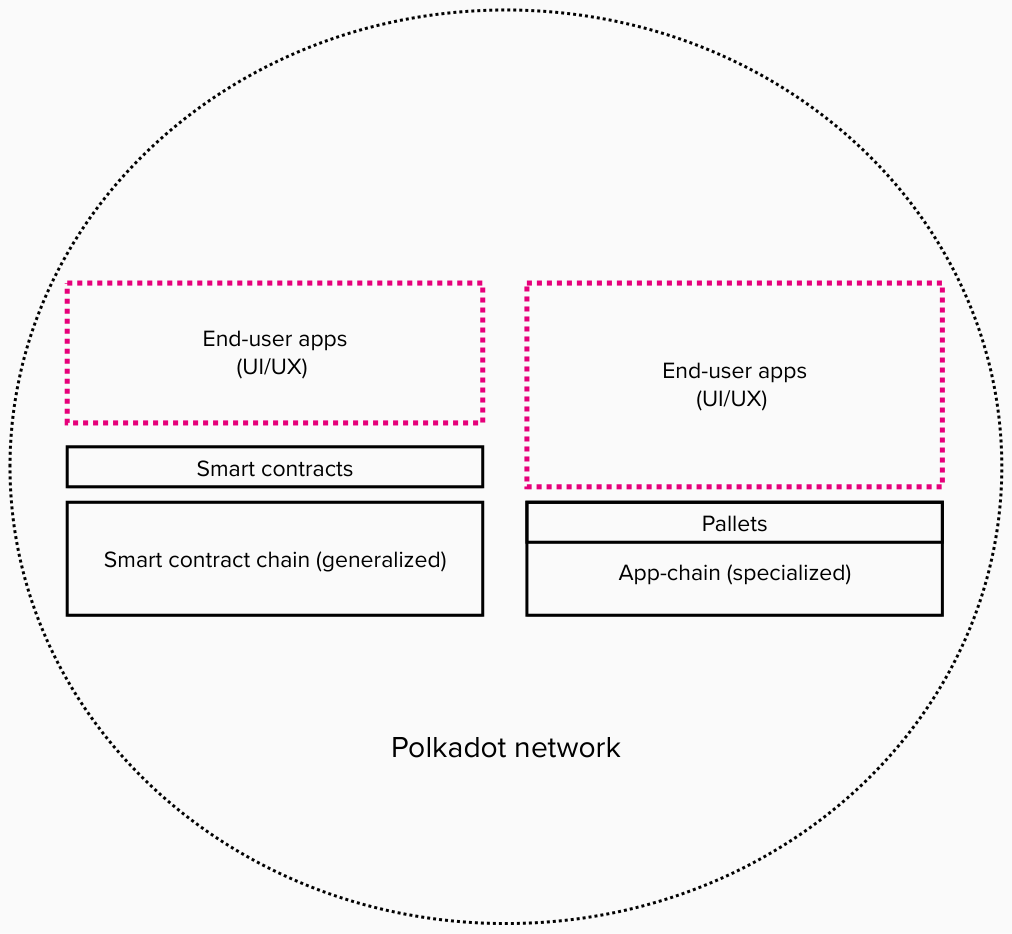Background
In the Polkadot ecosystem there are primarily two approaches for creating, minting and managing non-fungible assets:
Using smart contracts (e.g. ERC-721, ERC-1155, PSP-34) and deploying them on EVM/Wasm compatible app-chains
Using app-chains, i.e. chains that specialize in providing services for creating and managing non-fungible assets

App-chains on Polkadot are built with Substrate — a blockchain SDK built in Rust. More colloquially called Parachains, they contain custom low-level modules that when combined make up the overall business logic and services provided by the chain.
Substrate has a framework to make it easy to create such modules, called FRAME. You can think of it like this: Substrate is to FRAME as NodeJS is to React.💡
In FRAME, these modules are referred to as pallets and the amalgamation of pallets (a.k.a the business logic of a chain) is referred to as the app-chain's runtime.
There's a number of app-chains on Polkadot that use specialized FRAME pallets to offer NFT capabilities for their users. The most commonly used pallet in production is the Uniques pallet which offers basic and secure functionality for managing non-fungible assets and has been extended by app-chain engineering teams to meet their users' needs.
However, it became apparent that these pallets were fairly limited in functionality and weren't able to meet the emerging use cases for non-fungible assets in the broader web3 ecosystem.
Some of these limitations were:
- It was not possible for users to mint items from an existing collection
- There were no built-in features for buying and selling items
- Collections were not designed to meet cross-chain use cases
The NFTs pallet was designed to address some of these limitations. It’s new features provide a multitude of configurations for collection creators and collectors, putting end-users at the forefront of its design decisions. Continue reading the next section to discover what those are.